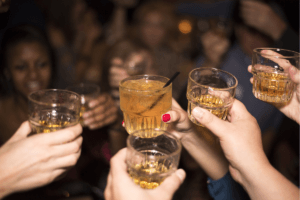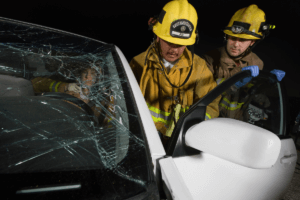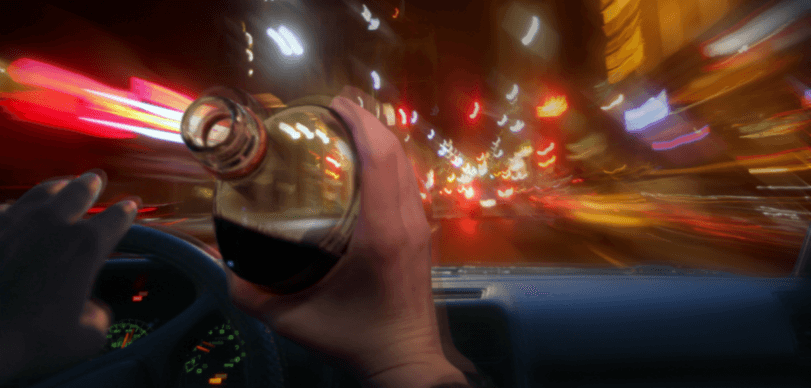Pretty much everyone is aware of the risks of driving under the influence of alcohol. Yet many people still believe they are sober enough to get behind the wheel when they are impaired. Safe driving requires a clear head and the ability to respond quickly. Alcohol impairs judgment and slows reaction times – which can lead to deadly results.
Drunk driving continues to be a problem on Texas roads despite stiff penalties and increased enforcement efforts. When a drunk driver causes a crash that injures someone else, the driver is likely facing both criminal and civil liability.
Persons injured by drunk drivers have the right to be compensated by the wrongdoers for the damage caused. Injured victims can make a claim and may later need to file a civil lawsuit in order to obtain compensation.
What are the Chances of Being Hit by a Drunk Driver?
According to the National Highway Transportation Safety Administration (NHTSA), one person dies in a drunk driving accident every 39 seconds in the United States, and that number is increasing. There was a 14% increase in alcohol-related fatalities between 2020 and 2021. And, alcohol is involved in about one-third of all fatal traffic accidents.
The Texas Department of Transportation (TxDOT) also reports the incidence of fatal crashes involving drunk drivers is on the rise. An average of three people were killed every day in 2022 by drunk drivers. Drunk drivers are responsible for 26% of the state’s fatal crashes.
Who Drives Drunk and When Is the Risk the Greatest?

Alcohol-impaired drivers are more likely to be young men. Drivers aged 21 to 34 make up about 54% of the intoxicated drivers involved in fatal collisions. Men are four times more likely to get into drunk driving crashes than women.
Drunk drivers are about three times more likely to be on the roads at night than during the day, probably due to a greater tendency to drink in the evening hours. And because consumption also tends to be greater, weekends see about twice as many deadly wrecks involving drunk drivers as weekdays.
Liability for Injuries Caused by a Drunk Driver
The drunk driver is, of course, liable for the injuries caused to others. But in Texas, there may also be other parties who have legal responsibility due to providing the alcohol to the driver. Known as social host or dram shop liability, the persons or businesses that provided alcohol to an impaired driver may also be held legally responsible for the driver’s subsequent actions.
Social Host Liability
Social hosts furnish alcohol to others in a social setting and are not licensed providers. Social hosts are generally not liable for the actions of someone who was furnished alcohol, even if the person was obviously intoxicated. There is an exception when alcohol is furnished to persons under the age of 18.
Adults, other than parents or legal guardians, who knowingly make alcohol available to a minor are liable for the injuries or damage caused by an intoxicated minor, whether the minor appeared intoxicated or not.
Dram Shop Liability
Under the Texas Alcoholic Beverage Code, licensed sellers or servers of alcoholic beverages can be liable to the persons suffering injuries or property damage by an adult drunk driver if the following conditions are proven:
- Alcohol was served or sold to the intoxicated person.
- The server or seller knew or should have known the person was intoxicated.
- The person’s intoxication was so obvious it presented a clear danger to the person or others.
- Providing alcohol to the intoxicated person was the proximate cause of the injuries sustained.
The Texas Alcoholic Beverage Commission (TABC) instructs sellers or servers of alcohol to look for the following indications of obvious intoxication:
- Lack of Coordination – Needs support to stand, fumbles with wallet, thick or slurred speech
- Reduced Inhibitions – Loud, overly dramatic, inappropriate behavior, aggressive
- Vision – Red, glassy eyes, droopy eyelids
- Slowed reaction time – Movements are slow and deliberate, senses dulled
- Appearance – Putting the head on the table, running hands across the face or through hair, nodding off, frequent trips to the bathroom, a strong odor of alcohol
Obvious intoxication may also be determined by the number of drinks a person has consumed, even if their behavior and appearance show no signs of intoxication. TABC provides charts for sellers and servers to use as a guideline to determine intoxication based on gender, approximate weight, and number of drinks served in an hour. For instance, a 180-pound man can have three drinks an hour and be impaired, but serve him four drinks in an hour, and he is legally (obviously) intoxicated.
Businesses do have a defense to allegations of dram shop liability under Section 106.14 of the Alcoholic Beverage Code. The ‘safe harbor’ provisions allow an employer to avoid dram shop liability for the actions of an employee if the following requirements are met:
- All employees are required to attend a TABC training program
- The employee in question has actually attended the program
- The employer has not directly or indirectly encouraged employees to over-serve patrons
An employer need only establish the first two requirements of the defense. The injured party must then show that despite compliance with the training, employees were encouraged to violate the law.
Compensation for Injured Victims of Drunk Drivers

Drunk driving victims are entitled to be compensated for both economic damages, such as medical costs and lost earnings, and non-economic damages, such as pain and suffering, mental anguish, disfigurement, and loss of enjoyment of life.
Exemplary or punitive damages may be awarded in drunk driving cases where the driver’s actions involved an extreme risk of harm to others, and the driver consciously chose to disregard the risk and proceed with the actions. Intended to punish the wrongdoer rather than compensate a claimant, exemplary damages are limited to a multiple of the compensatory damages not to exceed $750,000.
How to Make a Claim for Damages After Being Injured by a Drunk Driver
Persons injured by drunk drivers may need to make claims against the driver’s insurance company, their own insurance company, and possibly the insurance company of a business that provided alcohol to the driver. When several insurance companies are involved, they will all be working to limit their liability as much as possible, and the rights of an injured victim can get lost in the process.
At Liggett Law Group, we don’t let insurance companies run roughshod over our clients. With over 70 years of combined jury trial experience handling personal injury cases, we investigate claims and hold insurance companies accountable for legitimate losses they must pay. Our car accident lawyers fight for the justice our clients deserve and don’t shy away from difficult cases. With Liggett Law Group, you can expect integrity, advocacy, and results.

